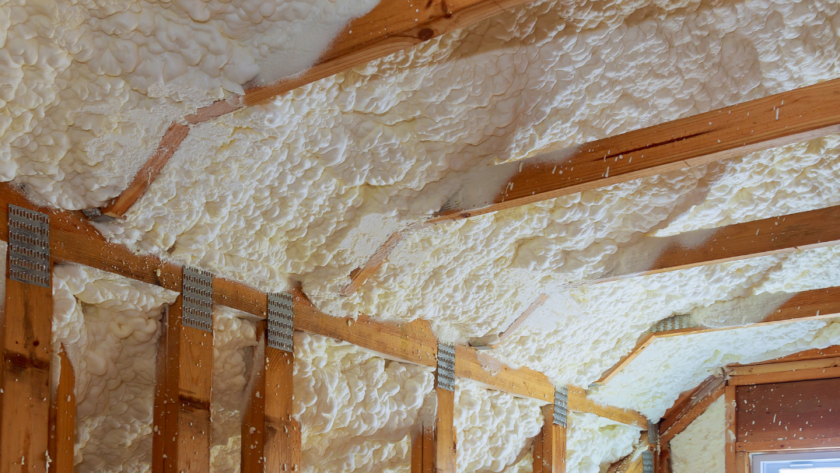Your facility’s carbon footprint is decreased, and you may save dollars on energy costs thanks to attic sealing. Insulation limits the quantity of exterior air accessing your house and keeps air from departing. Start by adding attic insulating for energy conservation if you intend to weatherproof your home.
To make your house pleasant and secure, different insulation projects can assist you in selecting insulation materials that save energy and have expert installation. Read the blog to know more about different types of insulation.
Insulation categories.
Since every house has distinct requirements, there’s really no one-size-fits-all method for selecting and applying insulation. Think about the R-value, toughness, price, and effectiveness of the various insulation materials. The larger the number, the superior the insulation since the R-value measures thermal properties.
Fiberglass insulating.
Glass fibers having approximate R-value between 3.1 through 3.5 every inch make up fiberglass. There are two types of fiberglass insulating material: batts as well as free fill. While loose fill may fill holes when pushed into position, batts arrive in huge, rolled sheets that are welded together by chemical mist.
Pros:
Quick Placement: Fiberglass batts are pre-rolled, making installation fast and simple. The installation of fiberglass batts by homeowners is common.
Fiberglass insulation has a great resistance to moisture, which lowers the likelihood of fungus and mildew formation.
Fire proof: Fiberglass has a fire-retardant composition that makes it suitable for wooden constructions. The vapor shield will prevent a fire from spreading quickly if one occurs.
Cons:
Poor Installation: Poor installation might reduce the fiberglass’s ability to insulate effectively. Performance is decreased by gaps because they permit heat to pass between layers.
Low Efficiency: Fiberglass does have a low R-value in comparison to other attic insulating types, resulting in a consequence, when the weather lowers, so does its performance.
Spraying Foam Insulation
Probably most effective insulation is spray foam, which has an R-value between 3.6 through 6.5 every inch. Insulation made of spray foam that is energy efficient is available in both closed-cell as well as open-cell forms. To produce the ideal air shield, the insulation may perfectly cover all cracks and crevices.
Pros
Longer Lifespan: Because spray foam insulation does not decay as rapidly as fiberglass, it lasts longer.
Home Defense: Spray foam’s polyurethane strengthens walls with energy-efficient insulation while keeping pests, rats, and mold out of your house.
Efficiency in energy: An air, vapor, and insulating barrier is provided by spray foam. Your home’s heating and cooling system may be improved with airtight sealing and efficient insulation.
Cons.
More costly: More expensive than other forms of insulation is spray foam. Furthermore, installation calls for pricey tools and previous familiarity with the material.
Gas is dangerous: When spraying spray foam, experts employ hydrochlorofluorocarbons (HCFCs) as a blowing agent. These substances include poisonous poisons that can damage the ozone layer.
Fiberglass Insulation.
Fiberglass insulation is no longer the industry standard; cellulose insulation has taken its place. The material has an R-value of 3.2 to 3.7 per inch and is safe to use. Additionally, cellulose energy-efficient insulation satisfies all criteria for green building certification.
Pros.
Effective Fit: Cellulose insulation can acclimate and adapt to any shape or impediment. By caulking gaps and crevices, cellulose insulation may be used to increase energy efficiency.
Less Expensive: Cellulose offers a strong R-value for your money and is less expensive than other forms of inflation.
Existing Walls: Cellulose may be used with buildings that already exist, eliminating the need to tear down drywall and add loose-fill insulation to finished walls.
Cons.
Open gaps: As cellulose settles, it might create gaps or apertures, reducing R-value and energy efficiency.
Absorb moisture: Cellulose is a porous material that can collect moisture and take some time to dry off. The R-value of wet insulation decreases and mold development is promoted.
Final thoughts
You cannot just select the insulation based on the pros. You have to consult with an insulation company to get the proper insulation service. Just search with “Insulation Companies near me” and you will get a bunch of list. Select from them based on their portfolio, reviews and work procedures. Also, check their authorization, credentials and all other things to get the right company for your attic.



